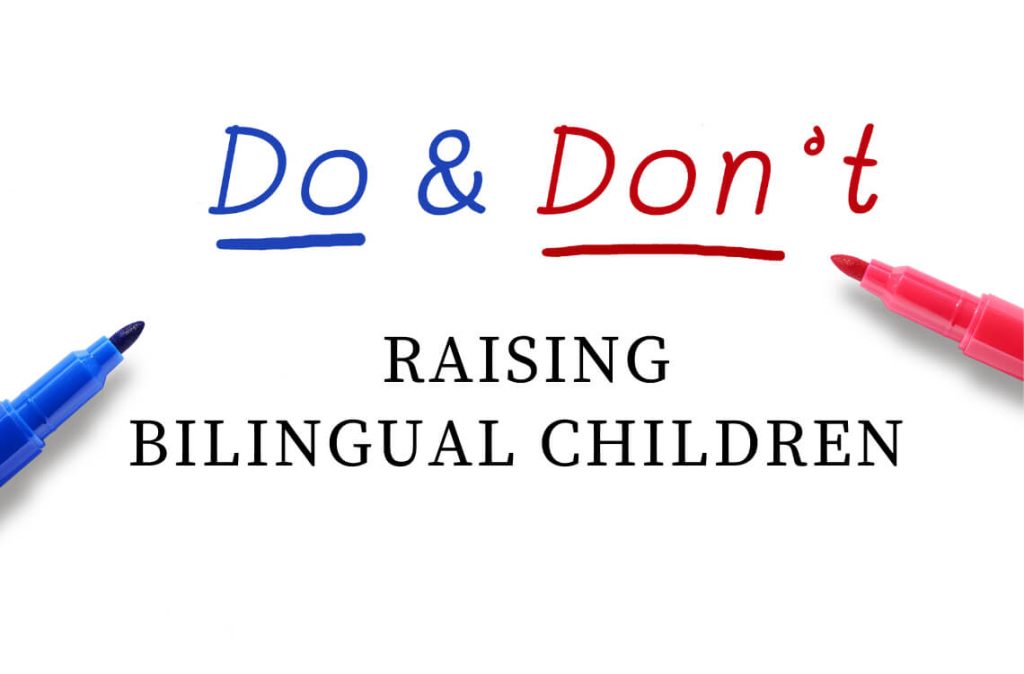In our increasingly interconnected world, raising bilingual children has become a priority for many parents.
The ability to speak multiple languages not only opens doors to new cultures and opportunities but also enhances cognitive development and communication skills.
Apart from future career success, the American Speech-Language-Hearing Association highlights that children who acquire a second language gain various learning advantages, making them more skilled in areas like word categorisation and sound segmentation.
However, navigating the journey of raising bilingual children can be challenging and confusing.
There’s deciding the language for them to learn, actually figuring out the best methods for efficient learning, and many more.
To help parents along this path, here are some essential dos and don’ts to keep in mind if you have decided to raise bilingual children for the benefit of their future.
The Dos:
Start Early
The earlier you introduce a second language to your child, the better.
Research suggests that children’s brains are more receptive to language acquisition in the early years.
Ideally, you should expose your child to both languages from birth, as they have a remarkable ability to absorb sounds and patterns.
You can put on children’s TV shows in foreign languages or provide them with beginner-level reading materials as an introduction to another language.
Consistency is Key
Create a consistent language environment at home.
Decide the language early on and make sure to stand by your decision as it takes a long time to learn a new language.
Assign one language to each parent or family member and stick to it.
Consistency helps children differentiate between languages and develop strong language skills in each one.
This will also help your child avoid confusion.
Engage in Meaningful Conversations
Language learning should be a natural and enjoyable process.
Engage your child in meaningful conversations, play games, and read books in both languages.
Create opportunities for them to practice their language skills in various contexts.
By making language use a part of everyday life, you will encourage your child’s active participation and fluency in both languages.
Provide Exposure to Native Speakers
Whenever possible, expose your child to native speakers of the languages they are learning.
This exposure helps children develop authentic accents, learn colloquial expressions, and understand cultural nuances.
It can be through playdates, cultural events, or even language immersion programs.
You might also want to enrol them in language classes.
Connecting with native speakers enhances language development and cultural understanding.
Celebrate and Embrace Both Cultures
Raising bilingual children is not just about language; it’s also about embracing diverse cultures.
Expose your child to the customs, traditions, and celebrations of both languages.
Teach them about their heritage and encourage them to appreciate and respect different cultures.
This will foster a sense of identity and pride in their bilingualism.
The Don’ts:
Don’t Give Up Too Soon
Language acquisition takes time, and children progress at different rates.
It is common for children to mix languages or show a preference for one language over the other initially.
This should not discourage you or lead you to abandon one language.
Keep providing exposure and encouragement, and your child will eventually become proficient in both languages.
Avoid Criticism or Correction
While it is essential to provide guidance, avoid criticising or correcting your child’s language use excessively.
Correcting every mistake can create a negative association with language learning.
Instead, focus on positive reinforcement and modelling correct language usage.
Provide gentle corrections when necessary but prioritise creating a nurturing and supportive language environment.
Don’t Force or Pressure
The goal is to make language learning an enjoyable experience for your child.
Avoid putting excessive pressure on them or forcing them to speak a particular language.
Each child has his or her own pace and comfort level.
Encourage their efforts, but allow them to express themselves in the language they feel most comfortable with.
Avoid Limiting Exposure
Exposing your child to a variety of language contexts is crucial for their language development.
Don’t restrict language use to specific settings or activities.
Instead, encourage them to use both languages in different social settings, such as at home, school or with friends.
This broad exposure will help them develop language skills that are adaptable to various situations.
Don’t Neglect the Minority Language
In some bilingual households, one language may be more dominant than the other due to societal or educational factors.
However, it is important to ensure that the minority language receives adequate attention to allow your children to be fluent in both languages.
You Play a Role in Unlocking Your Kids Bilingual Potential
Whether you are bilingual yourself or simply want your child to learn a new language, you can be confident that providing them with adequate exposure and positive experiences in both languages will result in their bilingualism.
Even parents who speak only one language can play an important role in their child’s language learning, potentially opening doors to academic success and employment options that would otherwise be limited in adulthood.
Learning a new language can be an exciting endeavour that can pave the path to academic success and eventual career success.
You will see your child’s linguistic abilities flourish much above your expectations if you make their language learning journey pleasurable and expose them to both languages frequently.
Disclaimer: The information provided in this article is for informational purposes only and should not be considered as medical advice from Motherhood. For any health-related concerns, it is advisable to consult with a qualified healthcare professional or medical practitioner.
For more insightful stories and fun recipes, stay tuned to Motherhood Story!
